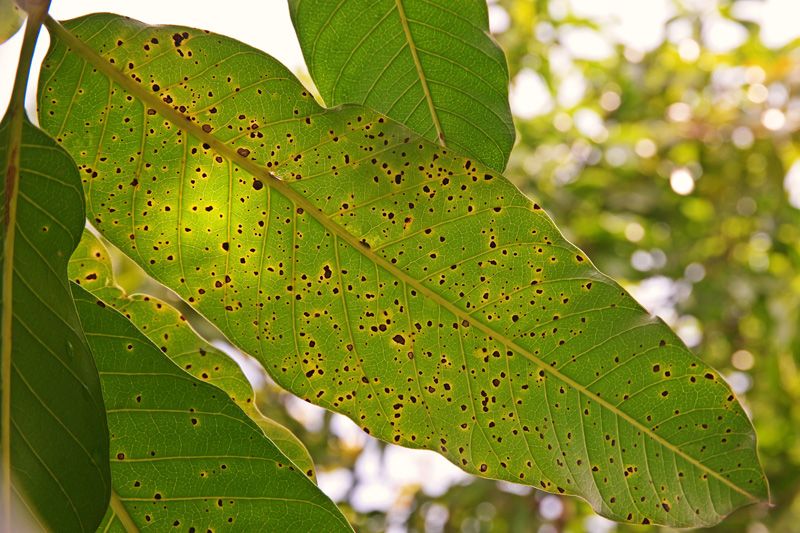
Anthracnose – Colletotrichum – Gloeosporium
Anthracnose
Common name
Brown blight
Dieback
Fruit rot
Stem canker
Tear stain
Causal agent
It is caused by a number of fungi attacking specific plant species. The most common fungal species causing anthracnose are Colletotrichum or Gloeosporium. Shady trees such as oak, ash, maple, and sycamore are more prone to developing this disease.
Scientific name
Colletotrichum
Gloeosporium
Symptoms & Signs
Anthracnose is identified through dark lesions on leaves which may develop into sunken lesions and cankers on stems. The leaves develop small yellow and brown spots along the veins, causing the leaves to dry, wilt, and fall off. It causes major premature defoliation of tall trees. The fruits may also develop sunken lesions with spore masses that spread the disease.
Transmission
The fungi overwinter in the stems and twigs and produce spores in the spring, usually in saucer-shaped fruits. The spores then transfer to other plants through rain or irrigation, enter the new plants through leaves and twigs, and start their life cycle again. Moist weather conditions favor the production of spores.
Time of concern
Early spring to later summer
Common hosts
Maple tree
Oaktree
Ash tree
Chinese dogwood
Chinese elm
Sycamore
